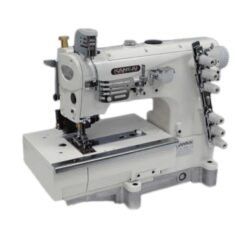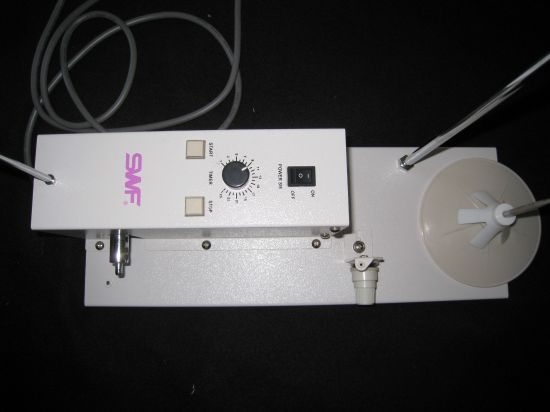

Although you have less control, you can usually set the tension successfully by working with only the upper thread. Instead, balance the tension by adjusting the upper thread. If your machine has a top-loading bobbin with a nonremovable bobbin case, you can’t adjust the bobbin thread tension. It is a delicate calibration, so make only the tiniest of adjustments. Using the screwdriver in your machine tool kit, turn the screw a quarter-turn right to tighten, left to loosen. There is a small screw on the side of the bobbin. If the bobbin doesn’t fall at all, the bobbin tension is too tight. If the bobbin case falls several inches, the bobbin tension is too loose. If the bobbin case falls a couple of inches, the tension is correct. Holding the thread, release the bobbin case over a padded surface (bobbin cases should not be dropped on a hard surface, as the impact may change how they perform).

Be sure the bobbin thread is threaded through the bobbin spring. To check the bobbin thread tension: If you have a front-loading bobbin, remove the bobbin and its bobbin case from the machine. Run your fingers over the stitches on both sides of the fabric they should feel smooth. Continue to change the tension settings until the stitches are balanced and no loops are visible on the top side. Sew another line of stitching on your sample to see if the tension is balanced. Try changing the tension dial up or down one unit. When you’re adjusting the upper thread tension on your machine, remember that higher numbers on the dial indicate higher (tighter) tension, and lower numbers indicate lower (looser) tension. Most of the time, the upper tension needs to be adjusted. If there are loops on the bottom side (black thread with red loops), the bobbin thread tension is too tight. If there are loops on the right side (red thread with black loops), the upper thread tension is too tight. Sew 6 inches or so, and look at the fabric’s right and wrong sides.

Thread the machine with different colors of thread in the needle and bobbin.

If you’ve eliminated all of the possibly causes listed above and the tension is still bad, try this diagnostic exercise.īegin by making test swatches. Remember to cover your machine between uses to prevent dust from collecting in the machine. The tiny knots often catch bits of lint in the tension discs. Unthread the needle, and pull the knotted thread through the tension disks down by the needle. Tie two or three overhand knots in the thread, and be sure they are tight. Pull some thread off the spool in the machine and cut it close to the spool. Is the upper thread catching on the thread notch or on another rough spot on the edge of the thread spool?ĭid you drop a metal bobbin on a hard floor? If so, nearly invisible damage to it might keep it from working properly.Īre the tension disks clean? Lint sometimes collects in the tension disks. Hold the thread firmly in your nonthreading hand, so you can “snap” the thread into the tension disks (much like flossing teeth). This ensures the thread is placed correctly in the tension disks.ĭoes the bobbin have the same weight of thread as on the top spool? Is the thread good quality? A good habit is to put the spool on the machine, and pull out 18 inches of thread. Remember, most tension discs close when the presser foot is down, so be sure to thread the machine with a raised foot. Be sure the machine is threaded correctly. Is the machine threaded properly? Most machines have thread guides, tension disks, a tension regulator, and a bobbin case spring that controls the bobbin-thread tension. Is the needle the correct size for the fabric? Is the sewing machine needle bent or does it have a burr on the tip? Before trying to adjust the machine settings, take a look at other issues than can throw off the tension: The tension is balanced.Ī number of factors can throw off thread tension besides the machine’s tension settings. The red stitching is the upper thread the black is the bobbin thread. If you see small loops on the right or wrong side, the thread tension isn’t correct. Perfect machine stitches interlock smoothly and look the same on both sides of the fabric. Poor sewing machine tension on a machine-sewn seam can result in an unstable seam, puckering, or just plain unattractive stitching.


 0 kommentar(er)
0 kommentar(er)
